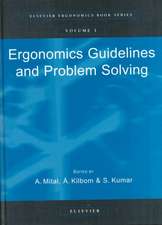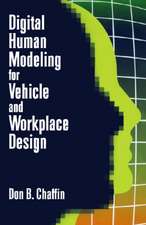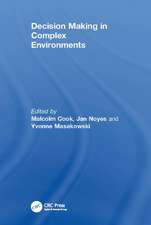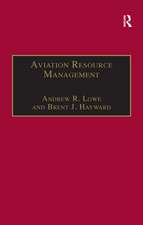Ergonomics: How to Design for Ease and Efficiency
Autor Katrin Kroemer Elbert, Henrike B. Kroemer, Anne D. Kroemer Hoffmanen Limba Engleză Paperback – 5 oct 2018
Retaining its easy-to-use layout and jargon-free style, this book remains an invaluable source of models, measures and advice for anyone who needs to understand ergonomics.
- Updated throughout to address new research on themes, including haptics, autonomous vehicles, and circadian rhythms
- Includes discussions of the physical (anthropometric, biomechanical) and mental capacities of the human, along with tables of reference data
- Provides both managerial and engineering recommendations, covering aspects of ergonomics that are relevant across the project
Preț: 565.74 lei
Preț vechi: 763.15 lei
-26% Nou
Puncte Express: 849
Preț estimativ în valută:
108.29€ • 117.67$ • 91.02£
108.29€ • 117.67$ • 91.02£
Carte tipărită la comandă
Livrare economică 14-28 aprilie
Preluare comenzi: 021 569.72.76
Specificații
ISBN-13: 9780128132968
ISBN-10: 0128132965
Pagini: 756
Dimensiuni: 191 x 235 x 45 mm
Greutate: 1.28 kg
Ediția:3
Editura: ELSEVIER SCIENCE
ISBN-10: 0128132965
Pagini: 756
Dimensiuni: 191 x 235 x 45 mm
Greutate: 1.28 kg
Ediția:3
Editura: ELSEVIER SCIENCE
Public țintă
Provides foundational ergonomics content for researchers and postgraduates in engineering fields, particularly industrial, manufacturing, aerospace, and automotiveCuprins
I. The Ergonomic Knowledge Base
1. Size and Mobility of the Human Body
2. Bones, Muscles, and Strength of the Human Body
3. How the Body Does its Work
4. How the Mind Works
5. Human Senses
6. How the Body Interacts with the Environment
7. Body Rhythms, Work Schedules, and Effects of Alcohol
II. Design Applications
8. Ergonomic Models, Methods, and Measurements
9. Designing to Fit the Moving Body
10. The Computer (Office) Work Place
11. The Individual within an Organization
12. Design and Arrangement of Displays and Controls
13. Handling Loads
14. Designing for Special Populations
15. Why and How to Do Ergonomics
III. Further Information
1. Size and Mobility of the Human Body
2. Bones, Muscles, and Strength of the Human Body
3. How the Body Does its Work
4. How the Mind Works
5. Human Senses
6. How the Body Interacts with the Environment
7. Body Rhythms, Work Schedules, and Effects of Alcohol
II. Design Applications
8. Ergonomic Models, Methods, and Measurements
9. Designing to Fit the Moving Body
10. The Computer (Office) Work Place
11. The Individual within an Organization
12. Design and Arrangement of Displays and Controls
13. Handling Loads
14. Designing for Special Populations
15. Why and How to Do Ergonomics
III. Further Information



















